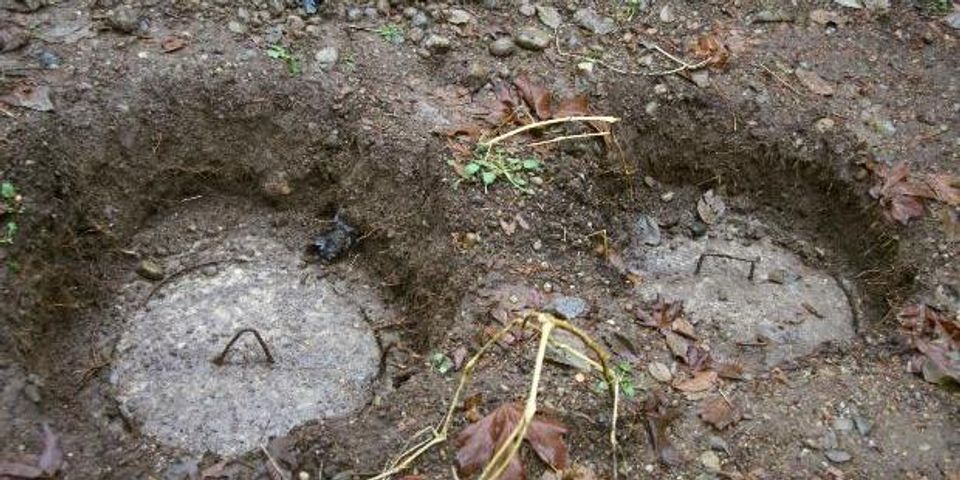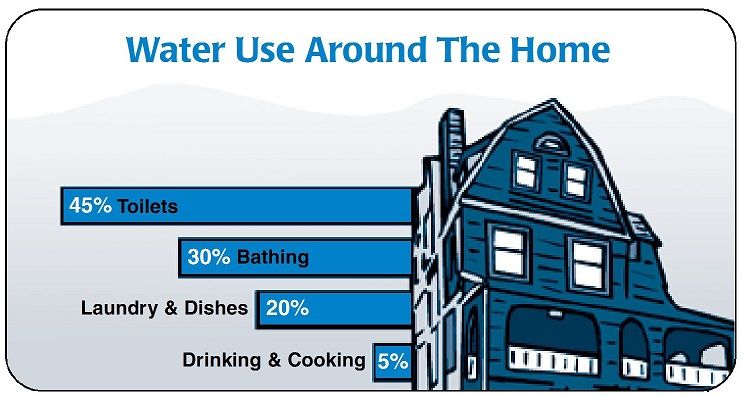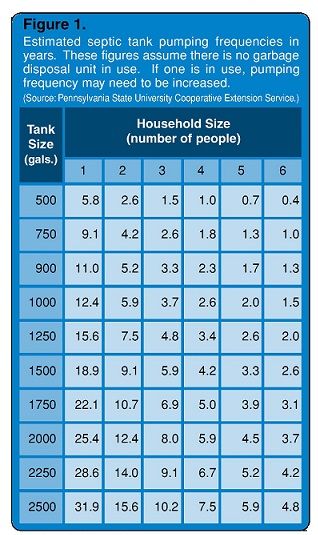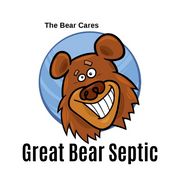
Septic System Inspection & Maintenance
Annual inspections of your septic system are recommended to ensure that it is working properly and to determine when the septic tank pumping should be done. Westchester County, Dutchess County, and Putnam County New York requires septic pumping.
A good reason to maintain your septic system is to maintain the economic health of your community.
Failing septic systems can cause property values to decline. Sometimes building permits cannot be issued for these properties. Also, failing septic systems may contribute to the pollution of local rivers, lakes, and shoreline that your community uses for commercial or recreational activities.
How to Maintain Your Septic system
Maintenance is often compared to automobile maintenance because only a little effort on a regular basis can save a lot of money and significantly prolong the life of the system.
Septic Systems that have moving parts may require more frequent septic inspections. By having your septic system inspected and pumped regularly, you can prevent the high cost of septic system failure.
Great Bear Septic can do a thorough inspection of the entire septic system and check for cracked pipes and the condition of the tees or baffles and other parts of the system.
A thorough septic system inspection by Great Bear Septic will include septic pumping and the following steps:
1. Locating the system.
Even a professional may have trouble locating the system if the access to your tank is buried. One way to start looking is to go in the basement and determine the direction the sewer pipe goes out through the wall. Back outside, the inspector will use an insulated probe inserted into the soil to locate the buried piping.
Once the system components are found, be sure to sketch a map and keep it on hand to save time on future service visits.
2. Uncovering the manhole and inspection ports.
This may require some digging in the yard. If they are buried, it will help future inspections if elevated access covers or risers are installed to make it easier to access the ports and manhole.
3. Checking connections.
Flushing the toilets, running water in the sinks, running the washing machine through a cycle will help to determine if the household plumbing is all going to the system and working correctly.
4. Measuring the scum and sludge layers.
The inspector will measure the scum and sludge layers with special tools inserted through the inspection port. A proper inspection will also include a visual observation of the scum and sludge layers. (The sludge layer is the heavier solids that have settled down to the bottom of the tank. The scum layer is made up of grease and light solids that float near the top of the tank.)
If the sludge depth is equal to one third or more of the liquid depth, the tank should be pumped. Great Bear Septic Service includes the septic pumping in the cost of the septic inspection.
See the table below for estimated pumping frequencies. But be aware it is most prudent to conduct regular inspections and pump when the inspection says the tank needs to be pumped.
Remember that toxic gases are produced by the natural treatment processes in septic tanks and can kill in minutes. Even looking into the tank can be dangerous. Leave inspections to the trained professionals. Call Great Bear Septic 24 hours a day for help!
5. Checking the tank and the drain field.
The inspector will check the condition of the baffles or tees, the walls of the tank for cracks,and the drain field for any signs of failure. If the septic system includes a Maintenance distribution box, drop box, or pump, these need to be checked too.
How often the tank needs to be pumped depends on the tank size, the number of people living in your home, and the habits of your particular household.
Water Use Around The Home

Chemicals improperly disposed of through a septic system can pollute local water sources and can contribute to early system failures.
What you put into your septic system greatly affects its ability to do its job. Remember, your septic system contains living organisms that digest and treat waste. As a general rule of thumb, do not dispose of anything in your septic system that can just as easily be put in the trash. Your system is not designed to be a garbage can and solids build up in the septic tank that will eventually need to be pumped. The more solids that go into the tank, the more frequently the tank will need to be pumped, and the higher the risk for problems to arise.
In the kitchen, avoid washing food scraps, coffee grinds, and other food items down the drain. Grease and cooking oils contribute to the layer of scum in the tank and also should not be put down the drain.
The same common-sense approach used in the kitchen should be used in the bathroom. For this reason it is important for home owners to educate themselves about what can and what cannot be disposed of through a septic system.
What Not To Flush
Don’t use the toilet to dispose of plastics, paper towels, facial tissues, tampons, sanitary napkins, cigarette butts, dental floss, disposable diapers, condoms, kitty litter, etc.
The only things that should be flushed down the toilet are waste water and toilet paper.
When used as recommended by the manufacturer, most household cleaning products will not adversely affect the operation of your septic tank. Drain cleaners are an exception, however, and only a small amount of these products can kill the bacteria and temporarily disrupt the operation of the septic tank.
Household cleaners such as bleach, disinfectants, and drain and toilet bowl cleaners should be used in moderation and only in accordance with product labels. Overuse of these products can harm your system. It makes sense to try to keep all toxic and hazardous chemicals out of your septic tank system.
To avoid disrupting or permanently damaging your septic system, do not use it to dispose of hazardous household chemicals.
Even small amounts of paints, varnishes, paint thinners, waste oil, anti-freeze, photographic solutions, pharmaceuticals, antibacterial soaps, gasoline, oil, pesticides, and other organic chemicals can destroy helpful bacteria and the biological digestion taking place within your system.
These chemicals also pollute What you put into your septic system greatly affects its ability to do its job. Remember, your septic system contains living organisms that digest and treat waste. As a general rule of thumb, do not dispose of anything in your septic system that can just as easily be put in the trash. Your system is not designed to be a garbage can and solids build up in the septic tank that will eventually need to be pumped. The more solids that go into the tank, the more frequently the tank will need to be pumped, and the higher the risk for problems to arise.
Garbage disposals and high water- use appliances, such as a hot tub or whirlpool, also affect the pumping frequency.
When it’s time to pump, be sure to hire a licensed contractor like Great Bear Septic 845-621-0250 we will have the appropriate equipment and will dispose of the sludge at an approved treatment site.
It’s a good idea to be present when your septic tank is being pumped. It is not necessary to leave anything in the tank to “restart” the biological processes, but it is also not necessary to scrub or disinfect the tank.
Pumping your septic tank is probably the single most important thing that you can do to protect your septic system. If the buildup of solids in the tank becomes too high and solids move to the drain field, this could clog and strain the system to the point where a new drain field will be needed.
Recordkeeping
It is very important to keep a detailed record of all inspections, septic pumping, permits, repairs, and any other septic maintenance to your system, along with a sketch of where your septic system is located. Having this information on hand for service visits can save you both time and money.
Learn the location of your septic system, and keep a diagram or sketch of it with your maintenance records.
Inspecting your septic system annually is a good way to monitor your system‘s health. Septic Inspections can reveal septic problems before they become serious, and by checking the levels of sludge and scum in your tank, you can get a more accurate idea of how often it should be pumped.
Protect the tank and drain field Protect your septic system from potential damage. Don’t plant anything but grass near your septic system —roots from shrubs and trees can cause damage— and don’t allow anyone to drive or operate heavy machinery over any part of the system. Also, don’t build anything over the drain field. Grass is the most appropriate cover for the drain field.
Sound septic system operation and maintenance practices include conserving water, being careful that nothing harmful is disposed of through the system, having a septic system inspection annually and complete septic pumping regularly.
By educating everyone in your household about what is and what isn’t good for septic systems, they can begin to develop good maintenance habits.

Additives/System Cleaners
While many products on the market claim to help septic systems work better, the truth is there is no magic potion to cure an ailing system. In fact, most engineers and sanitation professionals believe that commercial septic system additives are, at best, useless, and at worst, harmful to a system.
There are two types of septic system additives: biological (like bacteria, enzymes, and yeast) and
chemical. The biological additives are harmless but some chemical additives can potentially harm
the soil in the drainfield and contaminate the groundwater. While there hasn’t been extensive study on the effectiveness of these products, the general consensus among septic system experts is that septic system additives are an unnecessary evil. Be aware that the extended use of strong pharmaceuticals and
personal care products may harm the working bacteria population in the tank. The total effects are unknown at this time.
National Environmental Services Center (800) 624-8301 or (304) 293-4191 Pipeline is published quarterly by the National Environmental Services Center at West Virginia University,
P.O. Box 6064, Morgantown, WV 26506-6064
ISSN 1060-0043
The contents of this newsletter do not necessarily reflect the views and policies of the U.S. Environmental Protection Agency, nor does the mention of trade names or commercial products constitute endorsement or recommendation for use.
Pipeline is funded through a grant from the U.S. Environmental Protection Agency Washington, D.C.
Steve Hogye—Project Officer
Municipal Support Division
Office of Wastewater Management
National Small Flows Clearinghouse
West Virginia University, Morgantown, WV
Rick Phalunas — IED
Marilyn Noah — Editor
Jennifer Hause — Technical Advisor
Ed Winant PE — Technical Advisor
John Fekete — Senior Graphic Designer
Jamie Bouquot — Graphic Designer
About the Business
Have a question? Ask the experts!
Send your question

